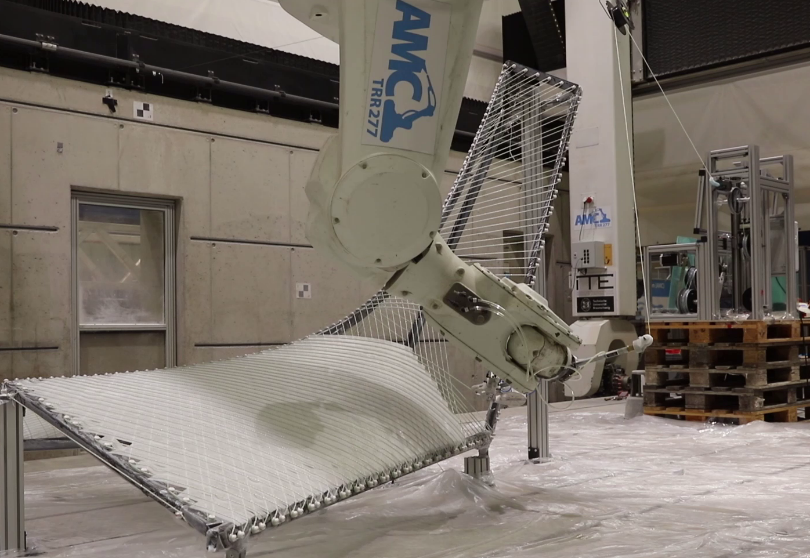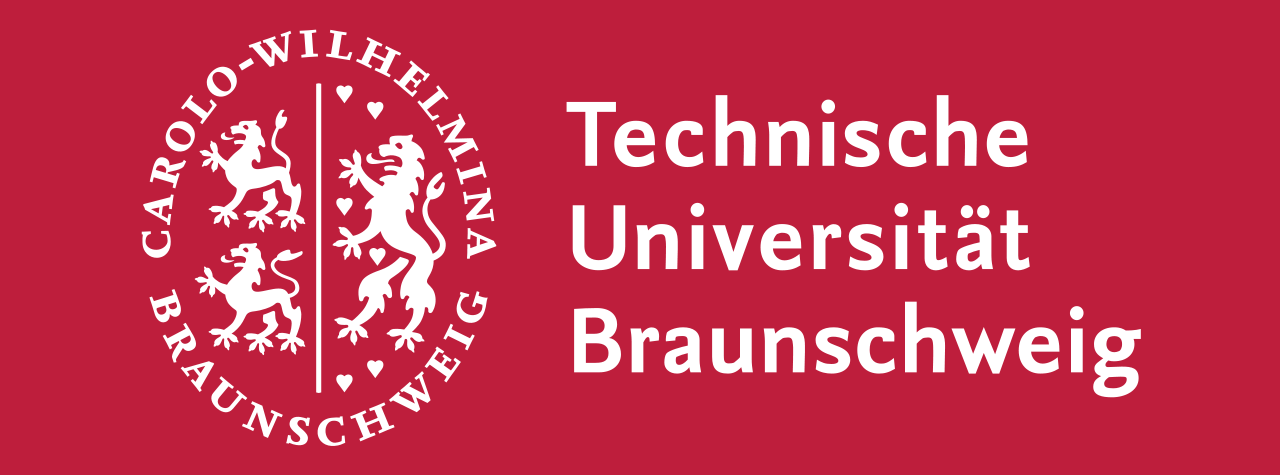Research Summary Report of A05
Integration of Individualized Prefabricated Fibre Reinforcement in Additive Manufacturing with Concrete
[24.09.2024]
Rothe, Tom; Doctoral researcher, t.rothe@tu-braunschweig.de, TU Braunschweig, Institute of Mechanics and Adaptronics (IMA)
Hühne, Christian; Project Leader, Christian.Huehne@tu-braunschweig.de, TU Braunschweig, Institute of Mechanics and Adaptronics (IMA)
The individual integration of fibre reinforcement into large additively manufactured concrete components allows new design freedom and reduces concrete consumption due to reduced concrete cover. Strategies for the integration of freely formable reinforcing strands for different AM processes are being developed in project A05. A Dynamic Winding Machine is used to prepare reinforcement strands. This machine is used to consolidate and impregnate a primary fibre strand and wind a secondary yarn around it as a surface structuring. Thus, these reinforcement strands can be adapted for different purposes and enable more efficient production of highly customised, reinforced concrete elements.
Summary
Within the WG Hühne of A05, the individualized production of reinforcement structures for the integration into large additively manufactured components is addressed. An especially build-up Dynamic Winding Machine (DWM) is used for the adaptive on-demand production of a fibre reinforcement strand. In close cooperation with the WG Hack a holistic approach of producing structural components directly on the construction site is developed. The new freedom of form made possible by additive manufacturing will be further enhanced by combining it with new reinforcement integration strategies developed in this project for winding fibre reinforcement strands. The unique possibilities of these integration strategies, namely Core Winding, Frame Winding and Pin-grid winding, are shown by the production of large scale, reinforced demonstrators.
Following the successful demonstration of the integration of reinforcement in the Shelltonics demonstrator (https://lnk.tu-bs.de/pacDrL ) and the Knitcrete bridge (https://lnk.tu-bs.de/zDPJx2), another large-scale demonstrator has been produced to show the versatility and capability of the fibre reinforcement winding process. The demonstrator, shown in Fig. 1, represents the Frame Winding integration approach (https://lnk.tu-bs.de/hq4H7Y). This involves creating a frame that serves as the basis for winding a reinforcement structure. By following the approach “reinforcement supports concrete” this demonstrator shows the possibility to produce thin shell elements by the techniques developed within the presented research project.
Current state of research
The latest demonstrators have shown the capabilities of the developed process. However, the dimensions and associated quantities of material to be produced are challenging. For this reason, current research has focussed, among other things, on making the existing process robust and at the same time increasing the production speed without compromising the quality of
the manufactured product. For example, individual elements were sawn out from the produced Robotic Frame Winding demonstrator and analysed in detail.
Furthermore, the investigations of the reinforcement strand are extended to its durability. For this purpose, the alkaline resistance and the resistance to concrete impact due to the Shotcrete process are analysed. For the evaluation of the alkaline resistance the tensile capacity retention rate is determined in accordance with ISO 10406-1. Therefore, reinforcement strands are immersed in an alkaline solution (s. Fig. 2). The results show that a residual tensile strength of around 60% can be achieved for ECR-glass reinforcement bars.
For the impact tests, reinforcement strands with different supports and prestressing are shotcreted (s. Fig. 3) and their residual tensile strength is determined. The results show that shotcreting has no statistically significant influence on their tensile strength.









